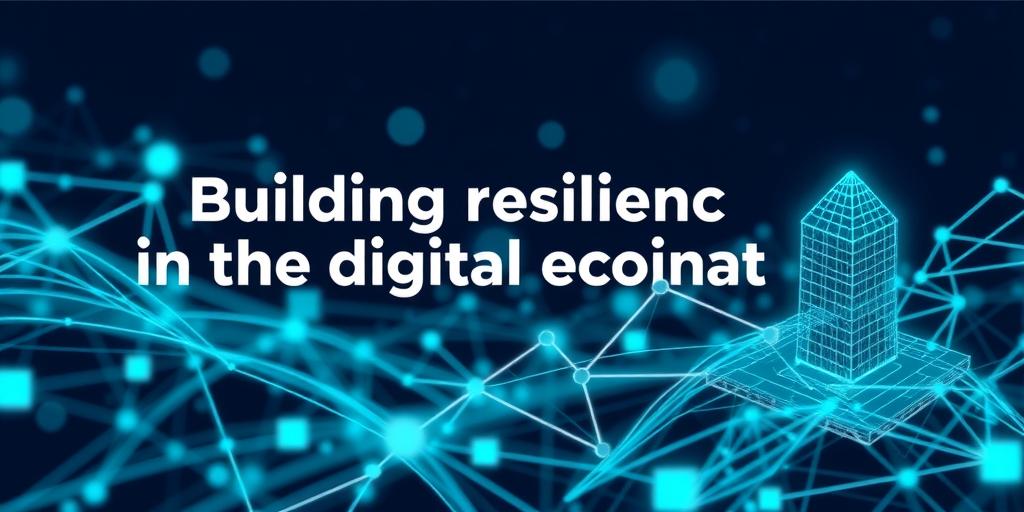Building Resilience in the Digital Economy
The digital economy, characterized by its rapid technological advancements and interconnectedness, presents both unprecedented opportunities and significant challenges. To thrive in this dynamic environment, individuals and businesses must cultivate resilience – the ability to adapt, recover, and grow in the face of disruptions. This post explores key strategies for building resilience in the digital age.
Understanding the Landscape
The digital economy is constantly evolving, bringing both rewards and risks:
- Increased Volatility: Rapid technological advancements and market shifts can quickly disrupt established business models.
- Cybersecurity Threats: The interconnected nature of digital systems makes them vulnerable to cyberattacks, data breaches, and fraud.
- Skills Gap: The demand for digital skills is outpacing the supply, creating a talent shortage and widening the skills gap.
- Economic Inequality: The benefits of the digital economy are not evenly distributed, leading to increased economic inequality.
Strategies for Building Resilience
To navigate these challenges, individuals and organizations must adopt a proactive approach to building resilience:
Invest in Digital Skills:
- Continuous Learning: Embrace a mindset of continuous learning and development to stay ahead of the curve.
- Upskilling and Reskilling: Invest in training programs to acquire new digital skills or upgrade existing ones.
- Cross-Functional Skills: Develop skills that span multiple disciplines, such as data analytics, cybersecurity, and digital marketing.
Embrace Agility and Adaptability:
- Flexible Business Models: Design business models that can quickly adapt to changing market conditions.
- Agile Methodologies: Implement agile project management methodologies to improve responsiveness and collaboration.
- Experimentation and Innovation: Encourage experimentation and innovation to identify new opportunities and solutions.
Strengthen Cybersecurity:
- Robust Security Measures: Implement robust security measures to protect digital assets from cyber threats.
- Data Encryption: Encrypt sensitive data to prevent unauthorized access.
- Cybersecurity Awareness Training: Provide cybersecurity awareness training to employees to reduce the risk of human error.
Promote Financial Resilience:
- Diversification of Income: Diversify income streams to reduce reliance on a single source.
- Emergency Savings: Build an emergency savings fund to cover unexpected expenses.
- Financial Literacy: Improve financial literacy to make informed decisions about investments and debt management.
Foster Collaboration and Partnerships:
- Strategic Alliances: Form strategic alliances with other organizations to share resources and expertise.
- Open Innovation: Engage in open innovation initiatives to tap into external ideas and talent.
- Community Building: Build strong relationships with customers, suppliers, and other stakeholders.
Examples of Resilience in Action
- Netflix: Transformed from a DVD rental service to a streaming giant by embracing new technologies and adapting to changing consumer preferences.
- Amazon: Diversified its business from online retail to cloud computing, e-commerce, and artificial intelligence, demonstrating its ability to innovate and adapt.
- Local Businesses: Small businesses that quickly pivoted to online sales and delivery services during the COVID-19 pandemic demonstrated remarkable resilience.
Conclusion
Building resilience is essential for thriving in the digital economy. By investing in digital skills, embracing agility, strengthening cybersecurity, promoting financial resilience, and fostering collaboration, individuals and organizations can navigate the challenges and capitalize on the opportunities of this dynamic environment. The future belongs to those who can adapt, innovate, and persevere in the face of adversity.









